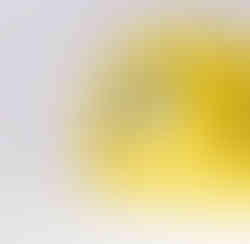Anthurium warocqueanum – The True Queen of Velvety Foliage
Anthurium warocqueanum, often called the "Queen Anthurium," is one of the most iconic species for aroid collectors. Native to Colombia’s cloud forests, it captivates with dramatically long, velvety leaves adorned by silver-white venation. With the right humidity, airflow, and light balance, this epiphytic masterpiece thrives indoors, becoming a breathtaking centerpiece in any advanced plant collection.
What Sets Anthurium warocqueanum Apart
- Velvety Texture: Dense trichomes create a matte, soft appearance that enhances visual depth.
- Leaf Size Potential: Indoors, leaves can reach 1.2–1.6 meters under optimal conditions; larger sizes are extremely rare.
- Natural Growth: Grows as a low to mid-canopy epiphyte on tree trunks in humid, shaded forest environments.
- Genetic Variation: Displays notable diversity in leaf shape and venation patterns across different populations.
Native Range and Environmental Conditions of Anthurium warocqueanum
Endemic to Colombia’s Andean cloud forests, Anthurium warocqueanum inhabits elevations from 100 to 1,430 meters. These ecosystems maintain year-round humidity above 80%, temperatures between 18–24°C, and constant diffuse light. Growing epiphytically, it anchors onto mossy trunks, gathering nutrients from rainfall, mist, and organic debris washed down from the canopy.
Indoor Growth Behavior of Anthurium warocqueanum
- Habit: Upright to semi-trailing epiphyte with long, cascading foliage when mature.
- Growth Speed: Moderate; new leaves emerge every 2–5 months depending on conditions.
- Leaf Span Indoors: 60 cm to 1.6 meters; exceptional specimens slightly larger with dedicated care.
- Toxicity Warning: Contains calcium oxalate crystals, causing irritation if ingested or handled excessively without protection.
Detailed Care Guide for Anthurium warocqueanum
- Light: Requires bright, indirect light to prevent leaf thinning. Avoid harsh midday sun.
- Watering: Keep the substrate lightly moist; allow the top 2–3 cm to dry between waterings. Always water with filtered, rain, or distilled water.
- Humidity: Maintain 80–90% relative humidity. Use enclosed terrariums, plant cabinets, or room humidifiers for stability.
- Temperature: Ideal at 18–24°C. Protect from cold drafts and temperatures below 16°C.
- Substrate: An airy blend of orchid bark, sphagnum moss, perlite, and coco husk chips ensures excellent drainage and root aeration.
- Fertilization: Feed monthly with a balanced liquid fertilizer diluted to 25–50% strength to avoid root burn.
- Repotting: Every 1–2 years or when the root system outgrows the container. Use breathable containers like slotted orchid baskets.
- Leaf Maintenance: Gently wipe with a damp, soft cloth if heavy dust accumulates. Avoid abrasive cloths that damage velvet texture.
- Structural Support: Stakes or hanging systems prevent mechanical damage to long leaves.
Propagation Methods for Anthurium warocqueanum
- Division: Best done during repotting when basal shoots develop roots of their own.
- Stem Cuttings: Take healthy segments with at least one visible node. Root in high humidity setups with sphagnum moss.
- Semi-Hydroponics: Adaptable to semi-hydroponic systems when transitioned carefully using inert media like LECA and moisture-controlled environments.
Managing Common Issues in Anthurium warocqueanum
- Spider Mites: Prevent with regular humidity maintenance and treat infestations with neem oil or targeted miticides.
- Yellowing Leaves: Often due to overwatering or poor airflow. Adjust watering practices and improve substrate breathability.
- Brown Leaf Tips: Linked to low humidity or fertilizer burn. Increase ambient humidity and flush substrate periodically.
- Crumpled New Leaves: Usually a result of low humidity or inconsistent watering during leaf unfurling stages.
Advanced Tips for Thriving Anthurium warocqueanum
Consistency is key. Avoid moving the plant frequently between environments. Provide strong, passive airflow without drafts, and maintain steady humidity to encourage full, symmetrical leaf expansion. Protect developing leaves from physical damage during the sensitive unfurling period.
Botanical Background and Etymology
The genus Anthurium derives from Greek “ánthos” (flower) and “ourá” (tail), referencing the characteristic spadix. Anthurium warocqueanum was formally described by Édouard André in 1879. The species name honors Belgian industrialist and plant enthusiast M. Warocqué, who supported botanical exploration during the 19th century.
Key Questions About Anthurium warocqueanum
- Can Anthurium warocqueanum grow without a humidifier? It's highly challenging. Optimal growth requires humidity above 80%, best achieved with humidifiers or enclosed setups.
- How can I maximize leaf size indoors? Stable high humidity, bright indirect light, consistent watering, and nutrient management are essential for reaching maximum leaf potential.
- Is Anthurium warocqueanum suitable for beginners? Best suited for intermediate to advanced growers familiar with humidity control and aroid care.
Bring Home the Majesty of Anthurium warocqueanum Today
Enhance your indoor collection with the velvety grandeur of Anthurium warocqueanum. Order now and introduce a living masterpiece into your plant sanctuary!
Anthurium warocqueanum
Anthurium warocqueanum comes in following sizes:
Baby Plant – is approximately 15 cm tall and comes in a ⌀ 6 cm pot
L – is approximately 45 cm tall and comes in a ⌀ 12 cm pot
XL – is approximately 70 cm tall and comes in a ⌀ 21 cm pot

























































